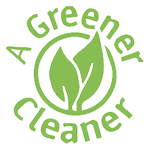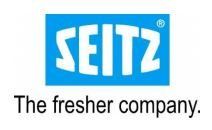Address: 3021 Loretto Rd, Jacksonville, FL 32223
| Email: agreenercleaner@yahoo.com
CALL US: 904-34-GREEN
Disinfectant Commision in VAH
COVID-19-Precautions
Disinfectant Commision in VAH
Jacksonville's first & only wet cleaning facility that practices to RKI tolerances to eliminate all germs including the Covid-19 virus! All cleaned with Seitz non-toxic cleaning products. Below is a statement from Seltz regarding their processes.
SEITZ UPDATE
Questions and answers as of March 17th
2020 General information
The news about increasing diseases caused by SARS‐CoV‐2 (2019‐nCoV or colloquially the coronavirus), is unsettling to all of us, and is now leading to excesses of mass panic.
Hoarding purchases of food, disinfectant products and masks have already been observed, and the availability of disinfectant products and masks in particular is so limited that some medical
operations have to be postponed.
Whether this fear is justified or not cannot be judged at the moment, but what we do know should make it possible to deal with this virus in a most responsible and effective manner.
SEITZ, as your supplier of hygiene products for washing and cleaning textiles, would like to provide information about the effectiveness of our individual products so that everyone can
get a precise picture of the possibilities for preventing infection by the virus or counteracting further spread of the virus.
The SARS‐CoV‐2 virus
Coronaviruses (CoV) can cause diseases in humans ranging from mild colds to more severe diseases such as Middle East Respiratory Syndrome (MERS) and Severe Acute Respiratory Syndrome (SARS). So far, 7 coronaviruses have shown human pathogenic potential. The coronavirus SARS‐CoV‐2 is a new virus that has not yet been detected in humans.
Symptomatology
Human infections with coronaviruses are usually mild and asymptomatic. Respiratory diseases with fever, cough, shortness of breath and breathing difficulties can also occur. In more severe
cases, an infection can cause pneumonia, severe acute respiratory syndrome, kidney failure and even death, usually in people whose immune system is weakened.
The SARS‐CoV‐2 virus has spread very efficiently from Human to human by droplet infection in a short time after its initial discovery in December 2019 as the causative agent of pneumonia.
Are smear infections possible with 2019‐nCoV?
In the case of various respiratory pathogens, however, transmission is also possible via contaminated hands, through which the pathogens reach the nasal mucous membrane or the
mucousmembrane ofthe eye ‐ a so‐called smear infection. The BfR writes about this in relation to corona viruses:
However, transmissions via surfaces that have recently been contaminated with viruses are conceivable through smear infections. However, due to the relatively low stability of corona viruses in the environment, this is only likely in a short period of time after contamination. (BfR)
"The stability of coronaviruses in the environment depends on many factors such as temperature, humidity and surface conditions, as well as on the specific virus strain and virus
quantity. In general, human coronaviruses are not particularly stable on dry surfaces. Usually, inactivation in the dried state takes place within hours to a few days. More detailed data on the novel corona virus (SARS‐CoV‐2
and 2019‐nCoV) are not yet available.
The only certainty is that transmission must take place via the mucous membranes.
Therefore, hand hygiene is of increased importance, as in many cases it reaches the mucous membranes mouth, nose and eyes via hands.
Hand hygiene in this case means regular hand washing and care, as well as hand disinfection if suspected.
First question:
Can the corona viruses be killed with SEITZ products?
Yes, if the following products are used and procedures are followed.
The hygienic washing of textiles is also increasingly coming into focus.
Up to now, it was mainly hospitals and nursing homes that made these demands on their internal laundry or service provider, but we see that these demands are also increasing in dry cleaning as well as in every other area where professional laundry is carried out.
Particularly in the emergency services, which can also come into contact with corona infected patients, the focus is increasingly on the protection of employees in order to avoid cross‐contamination of textiles to humans. SEITZ has developed various systems for this purpose, which are certified according to RKI; EN, VAH and IHO and guarantee safe killing of the coronavirus.
In general:
The rules and regulations in different countries are not the same when it comes to disinfection procedures. Therefore only the German regulations and Seitz processes and products are described here which are certified and registered with the RKI (Robert Koch Institute) for chemo‐thermal disinfection.
Laundry and any kind of textile material that can be machine‐treated in a washing machine can be disinfected using various methods and chemicals.
1. Liquid processes ‐ Chemo thermal
a. Normal laundry
i. Viva Oxy/Viva Sol procedure
2. Powder process Chemo thermal
a. Normal laundry
i. Mega Pur Process
Hereafter we will briefly introduce some of the systems mentioned for disinfecting procedures in laundry services and textile (wet) cleaning:
1. Chemo‐thermal disinfection
(certified combination of time, temperature, disinfectant and detergent)
− can be applied to any type of textile material and dyes. Seitz has certified processesfor laundry and clothing that meet the requirements of category A (bacteria + fungi) and B (viruses)
The methods
Viva Oxy/Viva Sol, and the all‐purpose detergent
Mega Pur have a
bactericidal, fungicidal
and virucidal
effect in the washing process. They are suitable for chemo‐thermal laundry disinfection in areas of food‐processing/manufacturing, industry, household, health care and public facilities. The processes are registered and certified by/at the Robert Koch Institute (RKI) with the effective categories A
and B
according to §18 IfSG
Mega Pur
is a powdered all‐purpose detergent which is used as a chemo‐thermal disinfection wash. Mega Pur
is for all types of bleachable textiles made of cotton and blended fabrics.
2. Thermal disinfection
by applying high temperatures at 90°C or 194°F for at least 10 minutes without temperature drop.
3. Thermal disinfection
at high temperature of 85°C or 185°F for at least 15 minutes without temperature drop.
Thermal disinfection (disinfection via high temp only) ‐ can only be used on textiles that can withstand the high temperatures as described without being damaged.
Chlorine disinfection ‐ can only be used on white and colored textiles that are sufficiently resistant to chlorine bleaching agents.
Sodium hypochlorite does not require a temperature like thermal disinfection. However, it is recommended to maintain a washing temperature of at least 40°C or 104°F for at least 10 minutes with a water ratio of at least 1:4.
Special information
✓ Please note that the Seitz certified processes are only registered with Viva Oxy, not with other peracetic acids.
✓ Please note that the concentration of chemicals is fixed in relation to the amount of water used!
✓ Please note that depending on the product density, the registered concentration may be given in ml or in grams (gr).
✓ Please note that the disinfection time only counts after all products have been dosed and the temperature has been reached.
✓ Please note that the registered temperature must be present at all times during the disinfection bath.
✓ Please note that you can also use emulsifier/degreaser and detergents in the disinfectionbath.
✓ Please note that in case of heavy soiling or contamination with blood or other body fluids a pre‐ wash is necessary.
✓ Please note that in the case of laundry from the healthcare sector, the loading location of the machines must be separated from the unloading location (loading on the dirty side ‐ unloading on the clean side).
✓ Cleaning of Textiles, Leathers, Suede, etc. in any dry clean solvent or process is not giving any disinfecting effect.
Second question:
How to deal with the laundry of people infected with the coronavirus?
In the RKI recommendations "for hygiene measures and infection control in patients withconfirmed infection by SARS‐CoV‐2", it says on the subject of laundry disinfection: "Laundry/textiles can be subjected to a laundry disinfection procedure according to RKI listed procedures".
Third question:
How to deal with laundry that is suspected of being contaminated?
If laundry is suspected of being contaminated, i.e. without proof of contamination by COVID‐19, disinfection laundering must be carried out; however, how exactly this is to be done is not
prescribed in Germany. Companies certified according to GZ‐RAL 992/2, 992/3 or 992/4 should in this case be washed hygienically in accordance with the listed procedures or the procedures submitted to the RKI, whereby CBW‐ washing systems can also be used.
Fourth Question:
Is disinfection possible in dry cleaning with solvents?
There are no fixed disinfection standards for dry cleaning with solvents; all hygiene standards exist only for washing processes. However, it is known from cleaning processes in today's dry‐ to‐dry machines that the cleaning process with drying reduces the bacterial count by about three powers of ten. A defined disinfection during dry cleaning with solvents therefore is impossible, but the cleaning process, drying and finishing/ironing contribute in a positive way to a hygienic reprocessing of the mostly non‐washable apparel.
SEITZ products
Guarantee highest quality by using the best raw materials and strict control of the final production. A third party authority (TÜV CERT) monitors all our operational processes in conformity with our quality management system according to ISO DIN EN 9001:2000, which offers our customers absolute quality assurance of our products.
This means that when SEITZ products are used correctly, guaranteed hygiene is always assured.
We see the removal of textiles as transfer media as our main task these days.
Our product range, which has been developed over many years, is a guarantee for this and makes its contribution to saving lives.
Since the demand on Seitz Mega- and Viva- products is already very high and that we cannot foresee what will be the situation with extra work in the upcoming weeks for the transport companies, our recommendation is that you increase your stock with these products and consider increasing your storage capacities.
Please do not hesitate to contact us for any further assistance.
We wish You, Your Families and Your Team to stay healthy.
Your Seitz, The Fresher Company, Team
Contact Information
Address: 3021 Loretto Rd, Jacksonville, FL 32223
Phone: 904-370-1007
Mobile: 904-34-GREEN (904-344-7336)
Email: agreenercleaner@yahoo.com
Hours of Operation
| Mon-Fri | 7:00 AM - 6:00 PM |
| Sat | 9:00 AM - 2:00 PM |
| Sun | Closed |
Content, including images, displayed on this website is protected by copyright laws. Downloading, republication, retransmission or reproduction of content on this website is strictly prohibited. Terms of Use
| Privacy Policy
Browse Our Website
Contact Information
Address: 3021 Loretto Rd, Jacksonville, FL 32223
Phone: 904-370-1007
Mobile: 904-34-GREEN (904-344-7336)
Email: agreenercleaner@yahoo.com
Hours of Operation
| Mon-Fri | 7:00 AM - 6:00 PM |
| Sat | 9:00 AM - 2:00 PM |
| Sun | Closed |
Content, including images, displayed on this website is protected by copyright laws. Downloading, republication, retransmission or reproduction of content on this website is strictly prohibited. Terms of Use
| Privacy Policy


